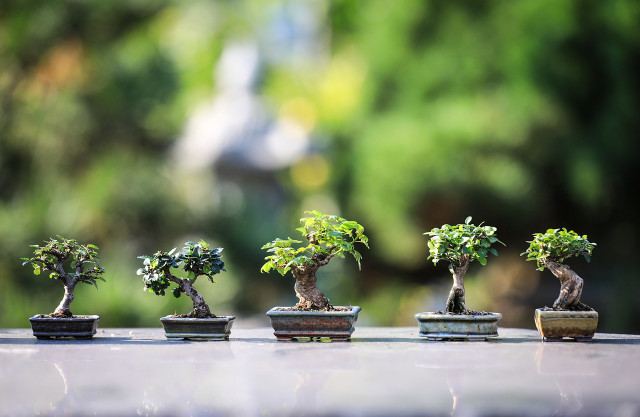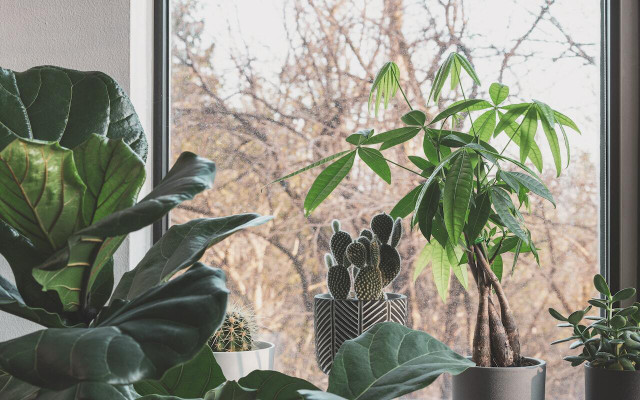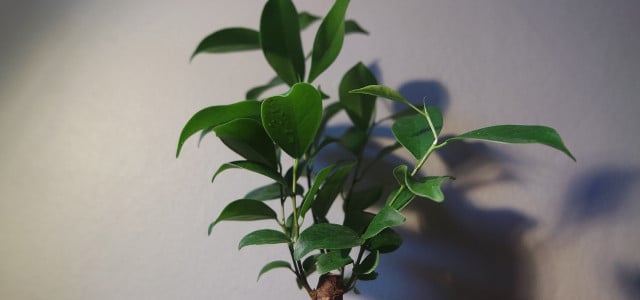Learn to spot the warning signs of an overwatered money tree, like yellow leaves, and find easy, effective solutions. Our helpful guide will keep your money tree thriving.
Pachira aquatica, also known as the money tree or jade plant, are popular houseplants said to bring good fortune and positive energy. They are characterized by their dark green leaves and braided trunks of several stems. While the plants are native to Latin America, they are popular in East Asian countries as well.
Money trees are commonly sold as small indoor bonsai plants. Those unfamiliar with caring for bonsai plants may have a harder time caring for them. Overwatering is a common mistake with many houseplants — but if you catch it in time, an overwatered money tree can be revived. Here’s how.
Want to learn more about fixing this issue with other plants, too? Check out our article 7 Signs Of Overwatering Plants & What to Do.
Yellow Leaves and Other Signs of an Overwatered Money Tree

(Foto: CC0 / Pixabay / ilyessuti)
With the wide variety of issues that houseplants can have, it can be challenging to diagnose problems. If you notice any of the following signs, you might be dealing with an overwatered money tree:
- Yellow and brown leaves. While dry, crispy brown spots may indicate dehydration, brown spots with yellow halos are a clear sign of excess water. You may also notice brown leaf tips and edges.
- Discoloration. Overall discoloration due to overwatering often results in loss of dark green pigment. The money tree will become lighter and more yellow.
- Wilting or curling leaves. Check for further signs to figure out what’s going on.
-
Drooping, limp and falling leaves. If the leaves are weak and limp, it usually is due to overwatering. If you notice defoliation (leaves falling off), it can be because of too much or too little water.
- Tip: Dehydrated plants lose older and lower leaves; overwatered plants lose leaves seemingly randomly. These include leaves at all different stages of growth, of all colors and all areas of the plant.
- Stunted growth. This indicates an overwatered money tree, so check for other signs as well.
- Consistently wet soil. The plant must have proper drainage to dry out in between watering. If the soil remains wet for several days, the plant is overwatered.
- Mold. Fungus needs a moist environment to grow and thrive, so if your plant’s soil is wet enough for mold, it’s been overwatered. Moldy soil is a common but fixable problem in many houseplants. In money trees, it can look like a white powdery substance. Other fungal growths may include algae or mildew.
-
Root rot: This is the most severe consequence of an overwatered money tree, and can cause your plant to die. Here are some ways to identify root rot — you can also read our guide, How to Treat Root Rot Symptoms & Save Your Plant, for even more help fighting this annoying problem.
- Check the plant’s stem: A weak and soft stem may indicate root rot.
- Examine the soil or the roots directly: If the soil is loose and has a foul odor, root rot might be the issue. To confirm, remove the plant and inspect its roots.
- Look for healthy roots: Healthy roots should be white and firm while rotting roots tend to be darker, moist, and mushy.
How to Fix an Overwatered Money Tree
Follow these clear steps to fix your overwatered money tree and help it bounce back to health:
- Gently remove the plant from its pot and brush off the soil.
- Examine the soil for wetness, odor or mold. If present, discard the soil and don’t reuse it.
- Inspect the roots for rot. Healthy roots should be firm and white, while rotting roots appear dark and mushy.
- If the roots are healthy and the soil is OK, place the plant back into its pot and allow it to dry out for a week or two. Create small holes in the soil to improve aeration and help moisture evaporate.
- If the roots of your overwatered money tree are rotting, remove them using clean, sharp scissors. Only keep the strong, firm and white roots.
- Prune any limp, wilted or discolored leaves to redirect the plant’s energy toward new growth.
- Repot the plant in a clean pot with drainage holes using fresh, dry soil. If reusing the same pot, clean it with hot water and mild soap first.
- Position the money tree in a location with ample indirect sunlight. Allow it to recover from the trimming and repotting, and avoid watering for at least a week.
How to Care for a Money Tree



(Foto: CC0 Public Domain / Unsplash / Scott Webb)
Follow these simple steps to ensure optimal care for your money tree:
- Keep your money tree away from direct sunlight, as it prefers plenty of indirect light.
- Water it every one to two weeks, increasing frequency slightly in the summer. Check the top inch of soil for dryness before watering, and wait if it’s still moist.
- Ensure proper ventilation by opening windows regularly to help prevent overwatering.
- Use a pot with multiple drainage holes and place a saucer underneath to allow excess water to escape. Monitor the saucer when watering from the top and discard excess water after 10 minutes. Alternatively, water from the bottom by filling the saucer and removing excess water after 10 minutes — this will help you avoid an overwatered money tree in the future.
- Maintain humidity around your money tree without overwatering. Place it in a humid area like a bathroom, or occasionally mist the leaves with a spray bottle.
Learn more about how to identify and fix overwatered plants:
- Overwatered Seedling: Warning Signs & Treatment
- Overwatered Hydrangea: Telltale Signs & Solutions
- Overwatered Pothos: Signs & Easy Solutions
- Overwatered Aloe Plant: Signs & Solutions
- Overwatered Snake Plant: Signs & Solutions
- How to Fix an Overwatered Monstera Plant
- Overwatered Tomato Plant: How to Spot the Signs
Read more:
- Money Tree Propagation: 2 Methods and Tips
- Keep Your Houseplants Alive: 10 Tips for Healthy Indoor Plants
- 12 Stunning Plants That Flower in Winter
Do you like this post?









